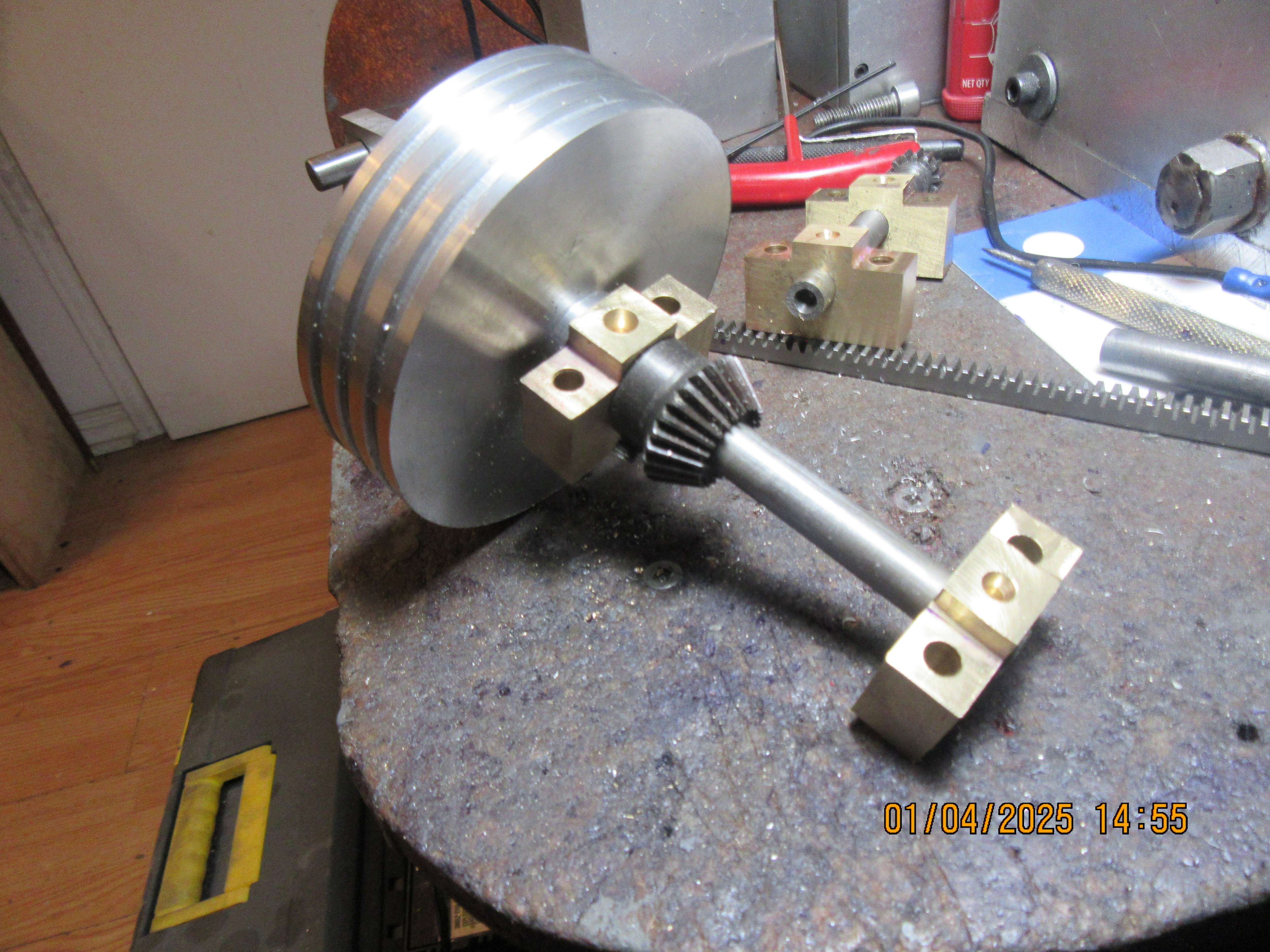On a steam launch

(Naval picket boat) I used a bobbin drive

for neutral - ahead/astern. as shown in these pics.



There is not much movement of the servo lever so hardly any difference in these views, but perhaps you can work it out?
It didn't work at first - oil on the smooth drive disc - until I knurled the surface, which makes it about slippage free and less sensitive to oil..
This boat is full of "mechanisms":
The rudder is driven via a gear-box:

For port,

ahead,

starboard.

The gearbox doubles the mechanical advantage of the servo, reducing the battery drain and loading of the servo. But it also replicates the original design whereby the drive crossed the transom from the cable pulleys/lever on the inside (dry-side) to the outside rudder (wet-side).
A feature rarely modelled by the best of them!
The boiler, engine, drive is all non-standard for this boat. The Stuart and Turner Star engine is a 180 degree crank twin cylinder single acting engine, revving to 2000rpm.
But it cannot self-start so needs the transmission I made.
From the Bobbin mount there is a boiler condensate return feed-pump, driven from a worm/wheel and an eccentric drive to a lever, so the pump action takes over 3 turns of the bobbin, but the return (water draw) action takes only 1 turn of the bobbin. Reasoning: The pump action is working against boiler pressure, but the suction only against an inch of water pressure, So the pump action needs a good mechanical advantage, while the suction stroke needs a good velocity ratio - to be quick.
This reduces the "slowing" of the engine during the pump stroke. (A characteristic often seen on small models driving a single action pump against boiler pressure). Maybe I'll send you a drawing Brian? - When I draw it up! Or you may draw your own and we can compare ideas?
Anyway, Brian, it is good to see you are back in "the team". Your writings have been missed...
Hope the mobility improves soon.
K2


































